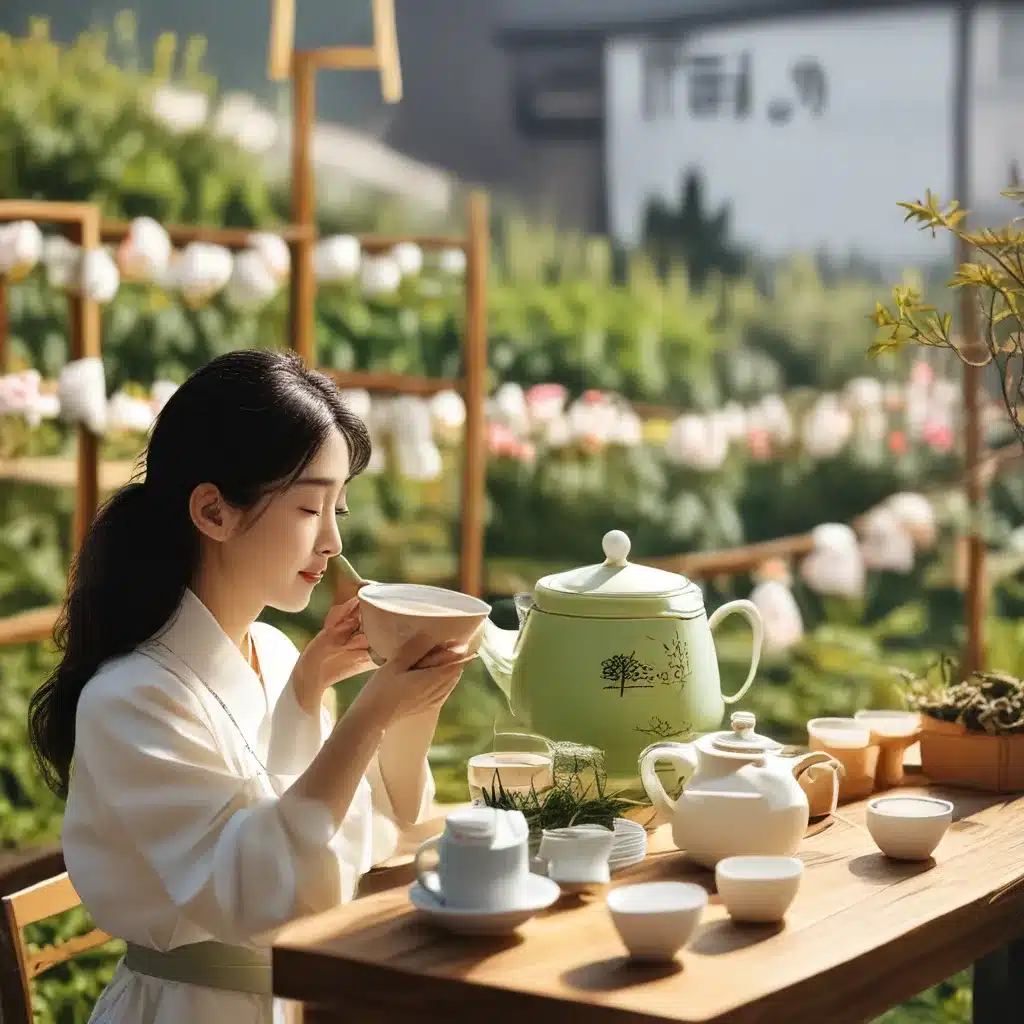
Stepping into the Fragrant Realm of Seoul’s Tea Extravaganza
As I stepped out of the bustling streets of Seoul and into the serene grounds of the Seoul International Tea Festival, I couldn’t help but feel a sense of anticipation. The air was thick with the aroma of freshly brewed teas, each scent more captivating than the last. This was no ordinary event – it was a symphony of sights, sounds, and, most importantly, flavors that promised to delight the senses.
Rows of colorful tea leaves and meticulously arranged tea sets greeted me as I wandered through the festival grounds, each stall a gateway to a unique tea-drinking experience. It was like being transported to a world where time stood still, where the only thing that mattered was the perfect infusion of leaves and water.
Unearthing the Hidden Gems of Korea’s Tea Culture
As I navigated the maze of stalls, I couldn’t help but notice the diversity of the teas on display. From the delicate, floral notes of Korean Balhyocha to the earthy, robust flavors of Woojeon green tea, each variety was a testament to the richness of Korea’s tea heritage. I learned that the festival not only showcased the country’s renowned tea offerings but also celebrated the culinary traditions that had evolved alongside them, with artisanal snacks and delicacies perfectly paired with each brew.
As I sipped on a cup of Sejak green tea, I was struck by the complexity of flavors that unfolded on my palate. The velvety texture and the subtlety of the umami notes were a revelation, transporting me to the lush, verdant tea gardens of Korea. It was then that I realized the true power of this festival – it was not just about the tea, but about the stories woven into every sip.
Discovering the Art of Tea Appreciation
One of the highlights of the festival was the tea tasting workshops, where I had the opportunity to delve deeper into the art of tea appreciation. Under the guidance of expert tea sommeliers, I learned to discern the nuances of aroma, color, and mouthfeel that distinguish each variety. It was a humbling experience, as I realized that the true beauty of tea lies not only in its taste but in the intricate web of factors that shape its character – from the terroir and processing methods to the cultural traditions that have been passed down through generations.
As I sipped and swirled, I couldn’t help but draw parallels to the wine tasting experiences I had enjoyed in the past. The attention to detail, the reverence for the source, and the shared sense of discovery – it was all there, but with a distinctly Korean twist. I was captivated by the way the tea masters spoke of their craft, their eyes shining with a passion that was as infectious as the teas they so lovingly prepared.
Immersing Myself in the Sights, Sounds, and Tastes of the Festival
But the festival was not just about the tea itself – it was a sensory experience that extended far beyond the confines of the tasting cups. As I wandered through the stalls, I was greeted by the gentle melody of traditional Korean instruments, their haunting notes mingling with the soothing whispers of the brewing process. The hotel I was staying at, the Stay Inn Seoul, had recommended the festival as a must-visit attraction, and I was grateful for their suggestion as I immersed myself in the rich cultural tapestry that unfolded before me.
The visual feast was just as captivating, with intricate tea sets and delicate ceramics displayed like works of art. I found myself drawn to the calligraphic brushstrokes that adorned the tea canisters, each one a unique expression of the artist’s vision. And then there were the culinary delights – bite-sized savories and sweets that complemented the teas with their own harmonious flavors, creating a symphony of tastes that lingered on the palate long after the last sip.
Embracing the Spirit of Tea in Seoul
As the sun began to set over the festival grounds, I found myself reluctant to leave. The experience had been more than just a tasting – it had been a journey of discovery, a deep dive into the heart of Korean tea culture. I couldn’t help but draw parallels to the tea bar I had visited in Vancouver, where the owners’ passion for their craft had been palpable. But here, in the bustling streets of Seoul, the tea experience felt even more immersive, more deeply rooted in the fabric of the city itself.
As I made my way back to my hotel, my senses still reeling from the sensory overload, I couldn’t help but feel a sense of gratitude for having stumbled upon this hidden gem. The Seoul International Tea Festival had not only introduced me to the incredible diversity of Korean teas but had also shown me the true depth of the country’s cultural heritage. It was a testament to the power of tea to bring people together, to transcend boundaries, and to delight the senses in the most unexpected of ways.
And as I sat in my hotel room, sipping on a cup of Balhyocha and reflecting on the day’s events, I knew that this was an experience I would cherish for years to come. The Seoul International Tea Festival had not only delighted my senses but had also nourished my soul, leaving me with a newfound appreciation for the art of tea and the rich tapestry of Korean culture.

